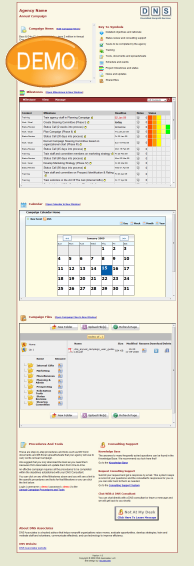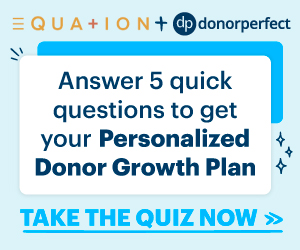Annual Giving: A Basic Guide
First, let’s talk a little about giving in general!
If you ask a donor to give to your cause then you need to be able to show that donor that you are using his or her money wisely!
People give to people not just specifically to causes! Everyone has a “sphere of influence” a group of people that they can go to and because those people respect you they will be willing to help you accomplish your goal in supporting a worthy charity.
Before you ask someone else to give you yourself have to give! Giving your time, however valuable this may be is not the same as giving actual money. While the amount you give to the nonprofit you support is less relevant, if you serve on the board of directors just putting a dollar in an envelope just to say that the entire board of the nonprofit is giving is disingenuous, to say the least, and (in my opinion) borderline fraudulent.
Having the public trust and a positive reputation are two intangible traits nonprofits need to have in great abundance before they can be successful.
A Solid Foundation for Annual Giving: Business Basics for Nonprofits
The nonprofit arena is in many ways similar to the for-profit arena. Many for-profit companies do not succeed when they start out because they are undercapitalized and/or they cannot find people willing to purchase their products at the prices they establish. These companies have not established themselves with their target markets and the demand for their product is nonexistent so the company is ignored and they fail. Each year in the United States 800,000 businesses fail and only 18 out of 100 businesses make it past the ten-year mark.
You cannot expect people to give to you on an annual basis if they have never heard of your organization or are unaware of what you do in the community and why it is so important. As part of this annual giving plan, your board of directors (with staff help) needs to have a time of brainstorming so you can identify all your “target markets” i.e. those people with whom you need to establish a relationship. It should be noted, however, that just because you might have a worthy cause does not always mean it will be easy to find someone willing to pay you to do that work. However, in this discussion, we will assume you do have supporters.
Annual Giving
When a nonprofit has developed giving strategies built upon sound business principles, then it is ready to build an effective annual giving program.
An annual giving effort involves events and fundraising efforts your agency does every year. It may include a membership drive or a “friends of… ” program. This could also be a special event or events you might do annually. Also, certain donations like United Way funds can make up part of the annual giving dollars you receive for your organization. Regardless of how you raise your dollars, your organization needs an annual giving plan and developing an annual giving plan takes time! Also, with any good plan, you need to organize your thoughts and write them down. Be very careful, however, that you just don’t go through the motions and have a few meetings and think to yourself, “Well, I’m glad that is over. Now I can get back to work!” What you write out as your plan is your work. This plan is your road map to your success and it should outline specific strategies you are going to use in order to have the money you need for your program. Having an annual giving plan is a critical part of the overall strategic plan for any organization. It’s been said: “You need to plan your work and work your plan!” An annual plan should not be a document that you do one time and forget about it or never consider revising. Let me say that again: “An annual plan should not be a document that you do one time and forget about it or never consider revising.” Why?
- Things change and people get tired of the same type of events over and over.
- People become numb reading the same boring letter asking for money.
- People want to see recent results and know they have been part of the success.
What’s the answer? When one talks about “annual giving” you need to constantly be mindful of identifying with the people making the gift! Likewise, you need to understand that everyone in your community will not be interested in what you do and many may never make a contribution no matter how important or worthy your cause might be.
Many campaigns fail to meet their goals because they fall behind, get off track or people do not do what they plan to do. One way to avoid this trap is to use the systematic approach developed by Diversified Nonprofit Services.
An Annual Giving Plan Must Be Donor Focused
Organizations need to be able to be flexible and respond in ways that appeal to what their donor likes!
Most nonprofits want things in a hurry and hope for instant success. They are waiting for the arrival of their fantasy “perfect donor.” This is the person in their mind that asks for nothing, and expects nothing, but gives them everything! This person does not exist.
Nonprofit board members or paid staff members must be willing to make the effort it takes to establish long-term relationships with the individuals they need to make their organization successful. Surprisingly it seems that many donors are resilient and forgiving and focus on the true good of the organization and often forgive an organization’s shortcoming. Yet this is an exception to the rule, so many nonprofits end up only having a marginal amount of success or impact on the group they are trying to serve because they ignored the donor in the long run. Here’s a short quiz:
- How are you communicating with the people who are funding your organization?
- Do you send out a newsletter?
- Do you have an annual report?
- Other than the time you send a letter asking for money, do your donors know you exist?
How did your organization rate? Remember, these questions are very important ones that MUST be answered by every nonprofit.
Your board of directors and staff need to be totally honest and look closely at your strengths and weaknesses at the same time you are identifying your annual fundraising goals. As a consultant, I am often amazed when I review annual budgets how often someone will pencil in a goal for fundraising above last year’s number without having any specific plan on how to make this increased difference occur. This is a specific example of why you need to have a plan!
Developing a Donor Database
Next, you need a donor database i.e. a way of keeping up with your supporters, even if this means only having contact information written out using note card system. If you expect to have any kind of ongoing contact you need to have a way of keeping your information in order and recording the gifts a person makes to your organization. There are many solutions out there that fit the many different needs of nonprofits. Some, like DonorPerfect, are well-suited for organizations of all sizes and can be customized, while others cater to specific sub-sections of the nonprofit world. Be sure to check out the Fundraising Software Guide to learn about the features you may want. If you need further help on establishing a donor database please refer our nonprofit software guide.
One extremely important role of a board member is helping to establish and foster new and existing relationships with donors!
Fundraising research has shown that if someone has already given to a cause that 50% when asked again they will give again. However, that number jumps to 80% if the donor feels like their previous contribution was properly acknowledged and appreciated!
Nurturing Donor Relationships
Nurture these relationships, because most of the philanthropic dollars given in America come from individuals. Say “thank you” more than once–invite donors to events or to your facility for a tour. Put them on your mailing list. Board members need to play an active role in thanking donors. They can do this by sending a handwritten note to a donor or by giving the donor a phone call letting them know how much their donation means to the organization and how they are helping make the difference.
No matter which strategy you choose, keep in mind that people give to people, and the number one reason people don’t give is that no one asked them!
To recap:
- People give to people! Read more: why people give.
- Public trust and a positive reputation are essential to attracting support.
- An annual giving plan must be donor-focused.
- Know your donors and communicate your thanks.
Good luck implementing your annual giving campaign and annual giving programs!
Meet your fundraising success partner
To learn more about DonorPerfect, fill out the form below or call us at 800-220-8111
"*" indicates required fields








